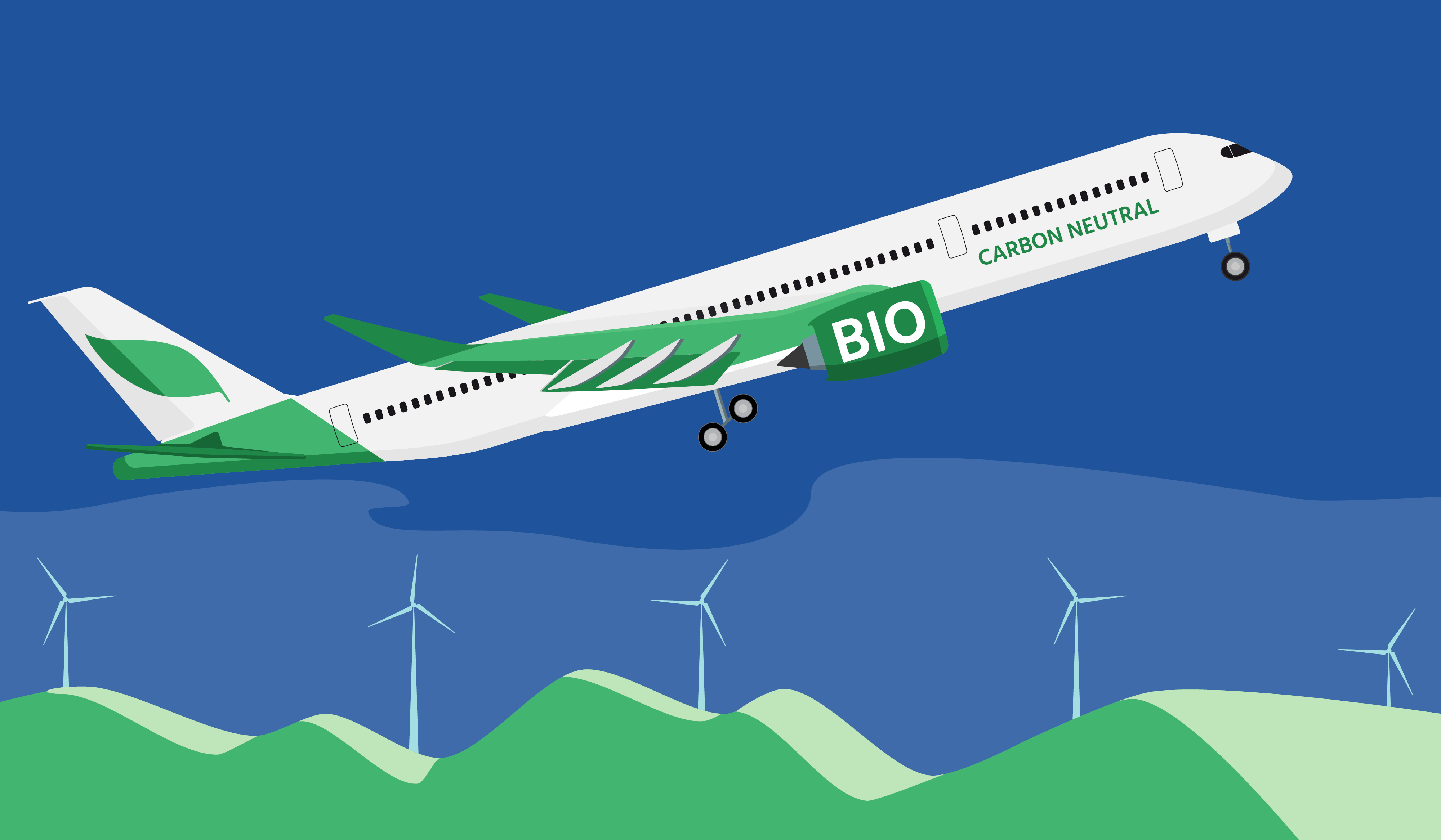
The summer vacations are here, and many Swiss people are once again traveling by air. The aviation sector is responsible for 3.5% of global warming. Can air travel become climate-neutral by 2050?
Researchers at the Paul Scherrer Institute PSI and ETH Zurich have calculated how air travel could become climate-neutral by 2050. Their result: Replacing fossil kerosene with artificially produced, sustainable fuel is not enough on its own. A reduction in air traffic would also be necessary. The researchers have published their findings in the journal «Nature Communications», according to the Paul Scherrer Institute.
Switzerland and the EU aim to become climate neutral by 2050
The EU is to become climate-neutral by 2050. This has been set by the EU Parliament in 2021. Switzerland is also pursuing this goal. The aviation sector, which is responsible for 3.5% of global warming, is expected to play its part in achieving this goal - especially since emissions of climate-relevant gases from flying are two to three times higher per passenger or freight kilometer than in other transport sectors. The International Civil Aviation Organization (ICAO) and many airlines have therefore announced their intention to reduce CO2 emissions to zero by 2050 or to strive for climate neutrality.
Reduce CO2 emissions to zero by 2050
In a new study, researchers from PSI and ETH Zurich have now calculated whether and how this could be achieved. «An important question here is what exactly is meant by zero CO2 or climate neutrality», says Romain Sacchi of the PSI's Laboratory for Energy System Analysis, one of the two lead authors of the study. If only the CO2 emissions of flying itself are meant, adds his co-author Viola Becattini of ETH Zurich, this falls far too short. After all, if one assumes that air traffic will continue to grow as it has in the past, then according to the calculations, the pure CO2 emissions from flights will only account for about 20% of the total climate effect by 2050. To make all air traffic climate-neutral, not only flying but also the production of fuel and the entire aviation infrastructure should have no further impact on the climate, as Jan Berndorff sums it up.
Air traffic must be reduced
However, the study found that this cannot be achieved by 2050 with the climate protection measures pursued to date in aviation. «New engines, climate-friendly fuels and filtering CO2 out of the atmosphere to store it underground (carbon capture and storage, or CCS) alone will not get us there», says Marco Mazzotti, professor of process engineering at ETH. «We need to additionally reduce air traffic.»
Climate-friendly fuel alone does not achieve the goal - but it helps
«With the volume of flights, we have the decisive lever in our hands», Sacchi emphasizes. «By flying less instead of more, in other words by turning off the tap instead of turning on the tap, we can actually cool the atmosphere and push the greenhouse effect of air travel toward zero.» Which doesn't mean we have to stop flying completely. The study's calculations show: If aviation wants to achieve climate neutrality by 2050, it will have to reduce air traffic by 0.8% each year - in conjunction with underground carbon dioxide storage - if it sticks with fossil fuels. It would then be about 80% of today's volume in 2050. If we succeed in switching to more climate-friendly fuels based on electricity from renewable energies, 0.4% per year would be sufficient.
Electric or hydrogen-based propulsion technologies are far from being ready for widespread use in aviation. Sustainable Aviation Fuel (SAF) is therefore seen as a great source of hope for the industry. This is an artificial kerosene that could replace petroleum-based kerosene on a one-to-one basis without having to redesign turbines and aircraft. But SAF also has a disadvantage: the energy required to produce it is far greater than for conventional kerosene.
Flying must become much more expensive
The extensive use of SAF makes CO2-neutral flying possible but costs more resources and money. Flying will therefore become even more expensive than it already must be in order to achieve climate goals. «Anyone who buys a ticket today can supposedly make their flight CO2-neutral for a few euros extra by investing this money in climate protection», says Sacchi. «However, this is window dressing because many of these compensation measures are ineffective. To comprehensively offset the actual climate impact, a ticket would have to cost about three times as much as it does today.» «Such a hefty price increase should indeed significantly reduce demand for flights and bring us closer to the goal of climate neutrality», says Viola Becattini. In addition, she says, SAF production can be expected to become cheaper and more efficient over the years as volumes increase, which has a positive impact on the carbon footprint. The study took such dynamics into account - including that the electricity mix used to produce SAF is changing. This distinguishes it from most other analyses.
Achieving climate neutrality in aviation is possible
«The bottom line is that there is no magic bullet for the goal of achieving climate neutrality in aviation by 2050», Sacchi says. «We can't keep doing what we're doing now. But if we develop the infrastructure to store CO2 underground and produce SAF quickly and efficiently, while limiting our need to fly, we can succeed.»
Text source: Jan Berndorff
The full text can be found at this link